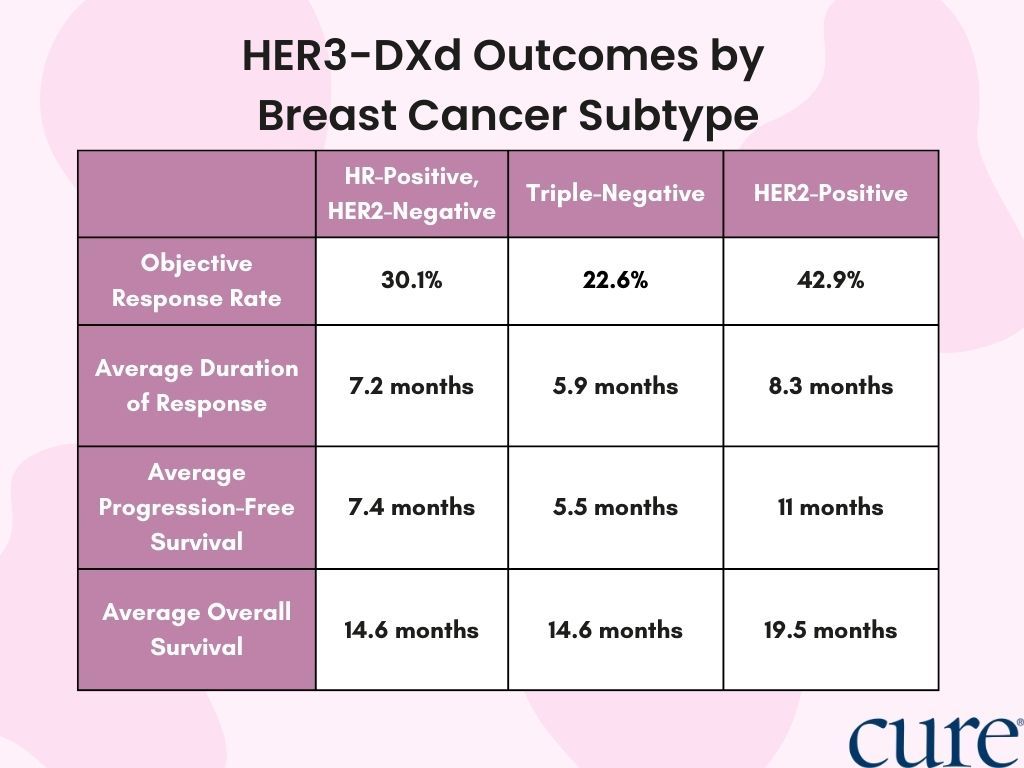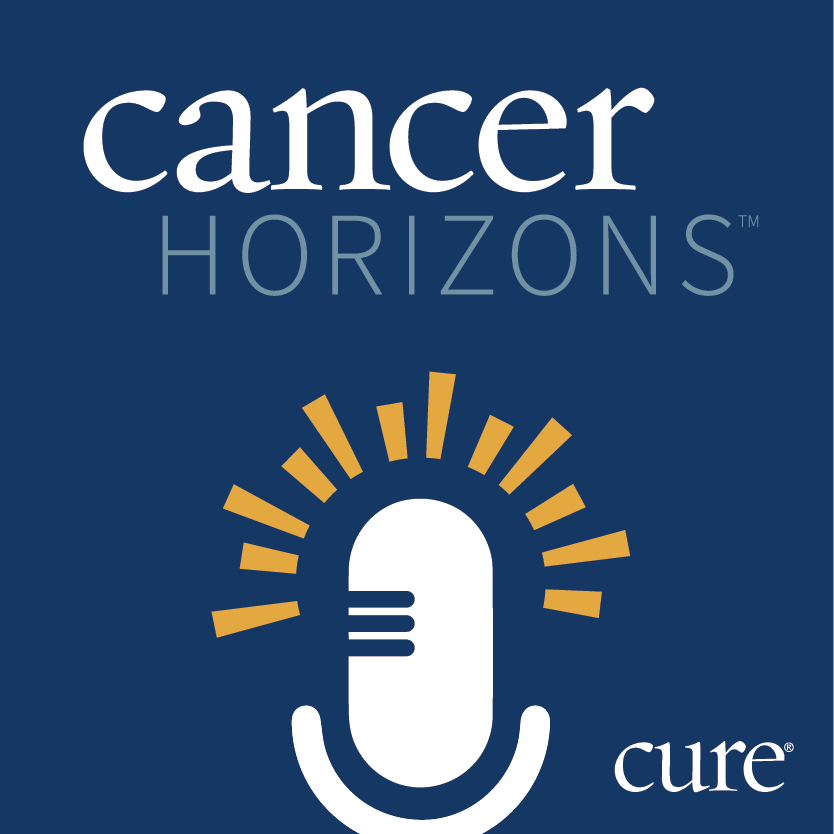Article
HER3-DXd Promising for Breast Cancer Type With ‘Poor Prognosis’
HER3-DXd proved to be safe and efficacious in treating patients with HER3-expressing metastatic breast cancer, recent study results showed.
The HER3 protein is overexpressed in approximately 30% to 50% of breast cancers, though there is currently no Food and Drug Administration (FDA)-approved treatment that specifically targets HER3. Now, an ongoing trial is investigating the use of patritumab deruxtecan (HER3-DXd) to treat patients with metastatic HER3-expressing metastatic breast cancer.
Early results were discussed during a poster presentation at the Miami Breast Cancer Conference.
“Overexpression of HER3 in (breast cancer) is associated with a poor prognosis,” the researchers wrote on their poster.
Study findings demonstrated that at an average follow-up of 31.9 months, the objective response rate, which, according to the National Cancer Institute, is the percentage of patients whose disease shrinks as a result of treatment, was 28.6%. On average, the duration of response from the treatment lasted 7 months. The researchers also noted that HER3-DXd led to a meaningful decrease in tumor size across most breast cancer subtypes.
HER3-DXd was efficacious across breast cancer subtypes, study results showed.

Among the group of 113 patients with HR-positive, HER2-negative breast cancer — including those with HER3-high and HER3-low disease — the objective response rate was 30.1% and the average duration of response was 7.2 months. The median time patients lived after treatment without their disease growing or spreading — a statistic known as “progression-free survival” — was 7.4 months. At the six-month follow-up point, 53.5% of patients did not experience disease progression. For this subset, the average overall survival, which is the time from treatment until death of any cause) was 14.6 months.
In the group of patients with HER3-high triple-negative breast cancer (53 patients), the objective response rate was 22.6%, with a 5.9-month average duration of response. The average progression-free survival was 5.5 months, and at 6 months, 38.2% of patients did not experience progression. Average overall survival for this group was 14.6 months as well.
For patients with HER3-high, HER2-positive breast cancer (14 patients), 42.9% responded to treatment with HER3-DXd, with the average duration of response lasting 8.3 months. Average progression-free survival was 11 months, and the 6-month progression-free survival rate was 51.6%. The average overall survival was 19.5 months.
“The safety profile was manageable, with a low rate of discontinuation due to treatment-emergent (side effects),” the researchers wrote.
While nearly all (181 out of 182 patients) experienced a side effect of any kind or degree, the researchers noted that they were typically pretty manageable, and 9.9% of patients stopped treatment due to a side effect. Percentages of treatment discontinuation were slightly different depending on which of the two doses — 4.8 milligrams per kilogram and 6.4 milligrams per kilogram — patients received. A total of 10.4% of patients given the lower dose stopped treatment due to side effects compared to 8.2% of patients given the higher dose.
Regarding dose reduction, 12.5% and 22.4% of patients in the lower dose and higher dose groups, respectively, had the amount of medicine they received decreased due to side effects. A total of 47.9% and 58.2% of patients in the lower and higher doses, respectively, had their treatment interrupted — meaning they stopped and started again — because of side effects.
Gastrointestinal and hematologic toxicity were the most common treatment-related side effects, the researchers explained.
Also, one patient in the lower-dose group and six patients in the higher-dose group died. The treatment-emergent side effects that were associated with death were disease progression in four patients, neutropenic sepsis (reaction to an infection in a patient with low levels of neutrophils in the blood) in one patient, extradural hematoma (a collection of blood in between the skull and the protective layer of the brain) in one patient and choking in one patient.
“These data provide encouraging evidence of antitumor efficacy with a manageable safety profile and warrant further evaluation of HER3-DXd across clinical and histopathological (breast cancer) subtypes,” the researchers wrote.
For more news on cancer updates, research and education, don’t forget to subscribe to CURE®’s newsletters here.




